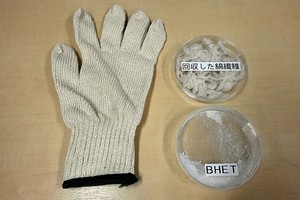By NANA MIYAGI/ Staff Writer
March 18, 2021 at 07:10 JST
YURIHAMA, Tottori Prefecture--A photograph of a pair of Sanin Shiba Inu puppies pressing their heads together as they run alongside each other has melted dog lovers’ hearts.
Photographer Tetsuya Yutaka posted his “once-in-a-lifetime” shot on Twitter in June, and the charming portrait has earned 22,800 retweets and 92,600 likes.
The viral tweet is evidence of the growing popularity of the indigenous breed that once faced extinction amid war’s ravages and a raging plague as well as a reward for a group of volunteers behind preservation efforts dating back to prewar years.
The Sanin Shiba-Inu Ikuseikai group has received a growing number of inquiries since Yutaka, 42, a resident of Daisen, Tottori Prefecture, uploaded his photo.
“I hope young people will also take an interest in our dogs and some of them will develop a passion for breeding,” said Morito Matsumoto, the group’s secretary-general.
Matsumoto, 63, said 15 or so people across the country were waiting to be given a Sanin Shiba Inu dog as of February.

The Sanin Shiba Inu is a small dog raised mainly in the town of Yurihama in central Tottori Prefecture. It has strong connections to dog breeds from Korea, according to a study by researchers from Nagoya University and elsewhere.
The breed is characterized by a smaller head and a more muscular and leaner build than the standard Shiba Inu dog. The variant has a pair of small, cocked-up ears narrowly separated from each other.
The dog, previously used in hunting, can tread lightly even in the grass.
“These little ones are surprisingly smart,” Kaoru Maeda, 69, a member of the Ikuseikai group, said as he took his two dogs, the 7-year-old male Hayate and the 1-year-old female Momo, for a stroll along a lake in Yurihama.
CRISIS AFTER CRISIS
Preservation of the breed was first undertaken by Masuzo Osaki, who is the grandfather of Satoshi Osaki, 62, president of the Ikuseikai group.
During the early Showa Era (1926-1989), Western dogs were introduced into Japan, which rapidly mongrelized domestic dogs. Alarmed by a loss of local characters in the canine population, Masuzo started studying indigenous dogs being raised in Tottori Prefecture.
He collected and bred Shiba Inu dogs of a variety that was called the Inaba dog in the southeastern Yazu area and the Hoki dog in the central Tohaku area.

Preservation efforts suffered a succession of setbacks, however.
As the Pacific War turned against Japan, the breeding of dogs became extremely difficult under widespread shortages of food.
Masuzo enlisted the help of the prefectural governor and other officials and managed to preserve between 20 and 30 indigenous dogs.
He later undertook crossbreeding with the Sekishu dog, a breed native to the western part of neighboring Shimane Prefecture, which set the foundation of today’s Sanin Shiba Inu.
During the 1950s and 1960s, distemper, a viral infectious disease of dogs, twice went rampant in Tottori Prefecture, and Masuzo’s kennel also lost many dogs to the plague.
The Great Tottori Fire of 1952 also demoralized dog enthusiasts in the eastern part of the prefecture.
500 MARK TOPPED
The Sanin Shiba Inu escaped extinction, but long struggled to gain more recognition. Its population was only 90 or so around 1990, partly because the dog gives birth to only two or so puppies per litter.
After Masuzo’s death, Satoshi Osaki’s parents and Setsuji Nagao, 87, set up the Ikuseikai group to carry on preservation efforts.

The volunteers have since worked hard for more than three decades to breed dogs and spread information about them. The population size has gradually increased through collaboration among group members.
Last summer brought delightful news: a big rush of puppy births.
About 520 Sanin Shiba Inu dogs were living in and outside Tottori Prefecture as of February. Topping the 500 mark was a longtime goal for the Ikuseikai group.
“The population has increased to such an extent that we just couldn’t have imagined at the time (the group was founded),” said Satoshi Osaki.




















Stories about memories of cherry blossoms solicited from readers
Cooking experts, chefs and others involved in the field of food introduce their special recipes intertwined with their paths in life.
A series based on diplomatic documents declassified by Japan’s Foreign Ministry
A series on the death of a Japanese woman that sparked a debate about criminal justice policy in the United States
A series about Japanese-Americans and their memories of World War II
Here is a collection of first-hand accounts by “hibakusha” atomic bomb survivors.